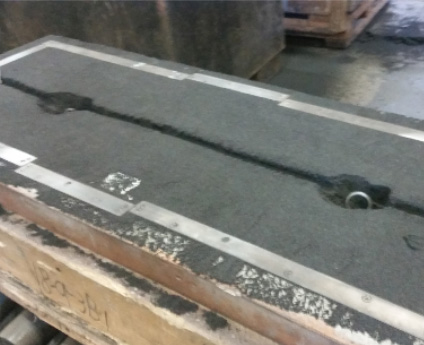
Simple Solutions That Work!™, Volume 3, October 2015
Written by Jack Palmer
Prevention of Defects with Venting

Jack Palmer
President
Palmer Manufacturing & Supply, Inc.
Article Takeaways:
A wise foundry veteran* said "...vent, vent, and vent some more." Venting is one of the most critical aspects of any molding / pouring system to eliminate gas related defects, such as blowholes, improve the surface finish, and allow for shorter pouring times.
Oddly, everyone recognizes the need to vent cores and molds to avoid problems from entrapped gases. Too often, though venting (which is not very difficult) is overlooked until a problem develops.
Consider the basics: there needs to be a path for the air displaced by the metal to exit. With green sand, air itself and the water in the sand mold can expand dramatically when changing from room temperature to 2500° F – potentially up to 40 times in volume!
With chemically bonded sands, the products of combustion need to have a way to exit the mold without going through the casting.
Venting Solutions
There are many different types of venting solutions available that generally fall into two categories – fixed and variable.

After core is filled. end of vent are shown where the gases are exiting

Vents placed into the core to create a path for the gases to exit without going into the casting.
Examples of fixed vents are simple vents that are parts of the pattern. These are used in addition to open as well as blind risers. When the cope is formed, the vents are part of it either in green sand or chemically bonded sand.
Variable vents can include manually drilled vents, wax vents that are formed in the mold or core and melted out, and flexible textile tubing. Manual drilling is labor intensive and has the potential for inconsistency. Wax vents require a great deal more handling and are energy intensive.
Flexible venting in chemically bonded sands can be an economic consistent solution to this critical process; this tubing is strong enough to support the sand as it sets up, and is permeable enough to allow large volumes of gases to escape even if the path is complex with a variety of directional changes.









